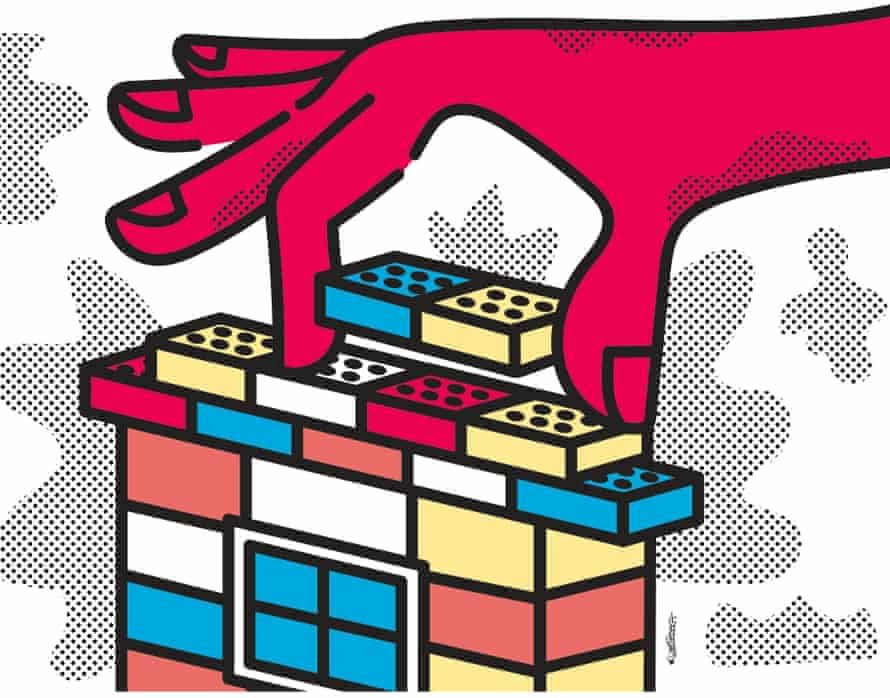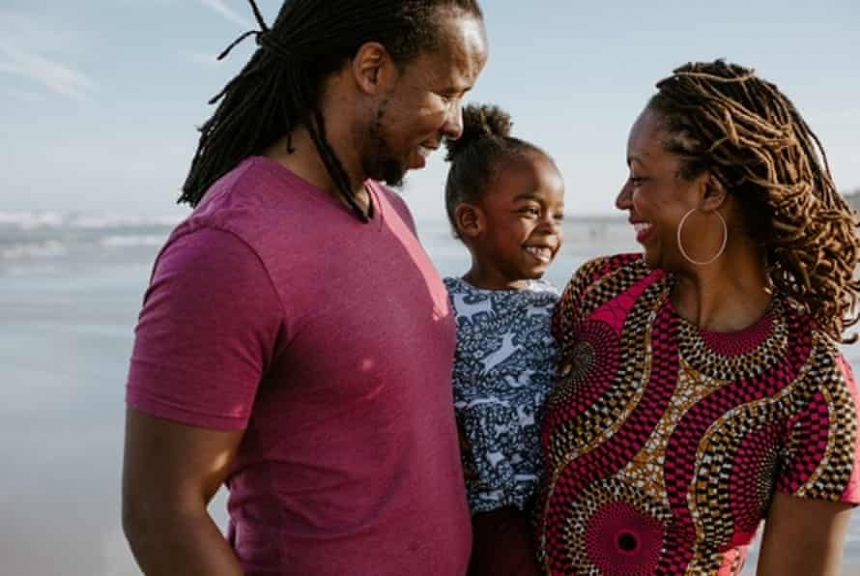In 2016, my wife, Sadiqa, found herself in an ambulance, its sirens blazing. Sadiqa had ridden in ambulances as a physician; never as a patient. Despite raising concerns during her pregnancy with a number of medical professionals, Sadiqa had been repeatedly ignored and reassured. She had a medical degree, had just turned 37 and worked in the same hospital that provided her maternal care. But education, social status, wealth, age, access to premium care – none of this can ensure that medical providers take the concerns of Black women seriously.
And yet the kind of premature birth Sadiqa was confronting really does constitute an emergency. She had been pregnant for only 24 weeks. When babies are delivered at 24 weeks, only about six in 10 survive in the US. Among survivors, most of these premature babies have chronic health challenges. Between 2018 and 2020, Black babies were the most likely to be born premature (14.2%), more likely than Native American babies (11.6%), Latinx babies (9.8%), white babies (9.2%) and Asian/Pacific Islander babies (8.8%). Black infants account for 15% of the births in the US, and 29% of the infant deaths. Similarly, in the UK, Black babies were the only ethnic group to see an increase in the rate of premature births between 2019 and 2020, and have the highest rates of stillbirth. The data is clear: racism is a mortal threat to children and parents alike during pregnancy and childbirth. But the threat does not stop there. What does racism do to the children – of all races – who survive?
Just as Sadiqa found herself in an emergency not of her own making, we also find our society in a dire, life-threatening emergency. Strict gun safety laws could prevent the spate of mass shootings that have rocked the US and Europe. But the mantra of white supremacy – that white people are under attack from immigrants – has greased the political wheels that rolled back gun safety laws. The west has been flooded with high-powered rifles and racist ideas, making for a life-threatening situation for us and our children.
Instead of restricting and banning ammunition and guns, it is antiracist books and education that are banned, particularly in the US. Instead of arming teachers with expertise on how to teach about racism, teachers are being asked to arm themselves with guns. Fears of dark bodies over the last few decades have, in the US and the UK, also justified the accumulation of police and prisons, which has contributed to the defunding of public safety nets, public health, public libraries, public schools and public universities relied on by children and families.
The situation is grave. But, like the nurses who ignored Sadiqa’s symptoms, people are not willing to fully accept the gravity of the emergency. If anything, we’re in even worse shape than Sadiqa: there is no ambulance in sight.
Just as we tell kids to look both ways before crossing the street, we must tell them to notice racist ideas,
To many, racial disparities, from health to wealth, do not signify an emergency made of racist policies. No, it’s primarily a poverty or class issue, people say. Or, in dismissing the racism, they point to behaviour. Meaning if Black people are dying at higher rates than white people from Covid-19, it’s because white people are making healthier decisions than Black people. Meaning there’s something behaviourally superior about white people. Meaning there’s something behaviourally inferior about Black people. And therein lies the emergency – not history, not policy, not power.
Many caregivers do recognise the emergency. They will tell you that they know we live in a racist society. But are they actively seeking to protect their children from racism? Are they arming their children with the tools they need to challenge this situation?
I don’t ask these questions to pass judgment. I ask them because they are exactly the questions I regret not asking when I contemplated becoming a parent. Of all the books I read during Sadiqa’s pregnancy, none were on raising an antiracist child – I wasn’t even sure I needed such a book. But now I see that I did. And that if we want to see real change in our lifetimes, we all need to start thinking about these ideas the moment a child is born.
There is no such as ‘not racist’
If you are actively challenging racism, congratulations, you are being an antiracist. But if you are doing nothing, while trying to claim some kind of neutral territory between racist and antiracist, you are complicit in allowing the structural problem to persist. To do nothing in a society of injustice is to uphold racism. To do nothing in the face of racism is to be racist.
We imagine our kids can’t be racist, so why teach them about a problem they can’t possibly have? We worry that, in any event, racist ideas are too sophisticated for kids to understand. But the opposite is true: racist ideas have spread across humanity and history precisely because they are simple. Dark skin is bad and light skin is good. Strikingly simple. And dangerous.
Acknowledge and accept your fears
I did not want to acknowledge that my daughter could internalise these ideas. I did not want to acknowledge that I had to protect her from these ideas by making sure she could recognise them, by making sure she understood racist ideas were wrong, by making sure that she saw all the skin colours as equals.
Sign up to our Inside Saturday newsletter for an exclusive behind the scenes look at the making of the magazine’s biggest features, as well as a curated list of our weekly highlights.
The thought of nurturing my child to be antiracist did not sit well with me. I wanted to shield my child from racism as long as I could. Avoid the dialogues as long as possible. Preserve the child’s innocence – and unbounded joy. Racism can be a bloodsucker of joy. I didn’t want my kid anywhere near that vampire.
But, if I’m being honest, was my planned avoidance about protecting my child? Or was it about protecting me? My discomfort? My insecurities about my ability to explain it all the right way?
It had been hard for me to be antiracist. And I’m an adult who has studied these issues for years. Now I have to assist a child?
Learning to be antiracist is easier for children
Children don’t have the emotional and conceptual baggage that we do. It is easier for children to learn the language of antiracism, just as it is easier for children to learn spoken languages. Deconstructing an ingrained racist identity is much harder than constructing a fresh antiracist identity.
Adults can unlearn racist ideas – and learn antiracist ideas. We are likely raised on racist ideas without realising it; our parents probably didn’t realise it, either.
It is never too early or late to start the journey to be antiracist
I have spent my entire adult life unlearning the racist ideas taught to me at my most impressionable stages of development. All this unlearning has been treacherous at times, but absolutely liberating in the end. The difficulty is fighting the reflex to deny what I have been and believed; the liberation is in discovering that I can change. Whether starting the journey at 30 or 80, anyone can strive to be antiracist. Whether starting at birth, at five, 10 or 15, any child can be raised to be antiracist.
Arm your children with the basics
Raising our children to be antiracist is like dressing their minds in armour before we send them out into the world. Let’s unpack two pieces of that armour:
“There’s nothing right about me because of the colour of my skin.” Imagine if all white children were taught this antiracist idea, internalised it and developed their sense of self through it. White children need protection from all the verbal and nonverbal messages in our society telling them they are special not simply because they are individual, unique and precious humans, but because they are white.
“There’s nothing wrong with me because of the colour of my skin.” Imagine if all kids of colour were taught this antiracist idea, internalised it and developed their sense of self through it. Children of colour must be protected from all those verbal and nonverbal messages telling them they are not special because they are not white.
Promote trust in humanity and cultural diversity
The most well-known racist form of child socialisation is promotion of mistrust, which may be communicated in parents’ cautions or warnings to children about other racial groups. Nowadays this might take a euphemistic form but still have profound effects on our kids. It appears in phrases like: “Be careful around those kids” or “That’s a bad school” or “He looks dangerous”.
It is racist to promote mistrust of any racial group of people. On the other hand, it is antiracist to promote mistrust of racist ideas, while promoting trust in humanity, all of humanity.
 Illustration: Andrzej Wieteszka/The Guardian
Illustration: Andrzej Wieteszka/The Guardian
Caregivers can promote trust in humanity through perhaps the most popular form of antiracist socialisation: cultural socialisation. This has to unfold in three crucial steps. The first is to raise a child to understand and appreciate what is distinct about their own culture and history. Next, we have to raise a child to appreciate what’s distinct about other cultures and histories. And, finally, we must raise the child to appreciate what’s the same about their own and the other cultural groups. In the words of the classic Sesame Street picture book, we have to teach kids that We’re Different, We’re the Same.
Embrace learning opportunities
Rather than leaning into opportunities for cultural socialisation and preparation, some people consider these solutions to be the problem. “[My kids] never seemed to notice or care what race someone was, until they came home from school after Martin Luther King Jr Day last year. Then all of a sudden, they were talking about people’s race all the time,” one white parent told Jennifer Harvey, a scholar of white antiracism. “And I felt like they actually might have been better off without that celebration. Because I really don’t think it’s good for them to focus on people’s race and put them in boxes! Isn’t that the opposite of what we should be trying to do?” The delusion that talking about race puts people into boxes diminishes our ability to explain how racism puts people into unequal boxes. We can’t explain to children the mirage of race – and the realness of racism – by ignoring it and teaching children to do the same.
We can teach children that skin colours are like book covers: they don’t tell us what’s inside. But some people think they do
Colour-blind caregivers think they can stop their kids – or themselves – from seeing race. But they are only stopping their kids from seeing racism. How can a society ever abolish racism if we deny its existence and indoctrinate our kids into doing the same? If we pretend that race – and therefore racism – doesn’t exist, how will we be able to name and quantify its effects and find ways to dismantle it? We will be in the midst of a problem that no one will be able to identify and quantify, even as the problem festers and worsens.
Don’t ignore the problem
To be fair, many people who say they are colour-blind correctly acknowledge that race doesn’t exist biologically, and for this reason they don’t want to speak of it as if it does. Yet while race doesn’t exist biologically, it does exist in human society because of racism. As Ta-Nehisi Coates wrote: “Race is the child of racism, not the father.” It is possible to teach our children that race exists as a power construct, devised to divide people and justify exploitative practices and policies – and that it doesn’t exist as a meaningful biological reality. It is possible to teach our children about the mirage of race and the realness of racism. It is possible to impart to our children: “Skin colours are like book covers; they don’t tell us what’s inside the body of the book. But some people think they do. Some people think darker people have less because they don’t work as hard. But that’s not true. What’s true is our leaders don’t work hard enough at instituting rules that are fair. Our rules are the problem, not darker people.”
Prepare your child for racism
The least commonly deployed form of antiracist socialisation is the most protective: preparation for racism. We prepare our children for all sorts of trying, uncomfortable and menacing aspects of our world to protect them. When we don’t, are we not being negligent?
We instruct kids to look both ways before crossing the street, protecting them from being harmed by distracted or speeding drivers. Likewise, we must instruct our kids to notice racist ideas, protecting them from being harmed. How will they know to stay away from “dark skin is ugly” if they don’t know it as a racist idea that can hit them?
Most parents teach their adolescents about their bodies, preparing them for their sexual lives, protecting them from unplanned pregnancies and STIs. Similarly, we must teach our adolescents the relative privileges and disadvantages of their racial bodies. Because when we don’t, we leave them unprepared for a world where their racial bodies will have real effects on their lives – in everything from how they’re disciplined in school to how they are treated by doctors, to what happens to them when they’re stopped by the police. If they have been left to believe that merit alone always explains the relative treatment – and the successes and failures – of all individuals and groups, we are nurturing their individual vanity or insecurity. We are nurturing their racist ideas.
To raise an antiracist child, we must raise an antiracist society
Ultimately, protecting an individual child requires that we also address the dangers in the society they will grow up in. We understand this with other issues. We advocate for policies that provide more effective screening of violent content in our media, safer crossings for our streets and laws to curb distracted driving. Likewise, when it comes to racism, we must advocate for policies that more effectively screen racist content in our media directed at children; create neighbourhoods safe from economic exploitation, police violence and food apartheid; and create opportunities for all kids, no matter their postcode.
Most societal caregivers have long recognised the protective importance of comprehensive sex education in schools. How can they not recognise the protective importance of comprehensive antiracist education in schools? Teaching kids about their reproductive bodies does not cause them to engage in sexual intercourse, just as teaching kids about racism doesn’t cause them to be racist. But not teaching our kids about either leaves them vulnerable to their own ignorance. As with misinformation about sex, children will learn misinformation about race whether or not caregivers discuss the subject. It is our job to preempt hearsay and misinformation with the facts.
Ibram X Kendi is director of the Center for Antiracist Research at Boston University. How to Raise an Antiracist is published by Vintage at £16.99. To support the Guardian and Observer, order your copy at guardianbookshop.com. Delivery charges may apply.
Kendi will be in conversation with Razia Iqbal at Conway Hall, London on Monday 4 July, 7-8.30pm. Tickets to the live event are available here or streaming here
READ NEWS SOURCE
The post Should you teach your children about racism? Of course – here's how appeared first on thewashingtondigest.com.






